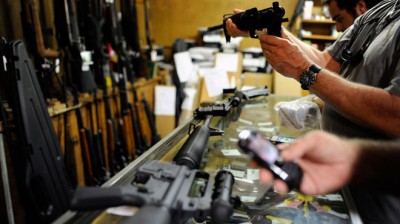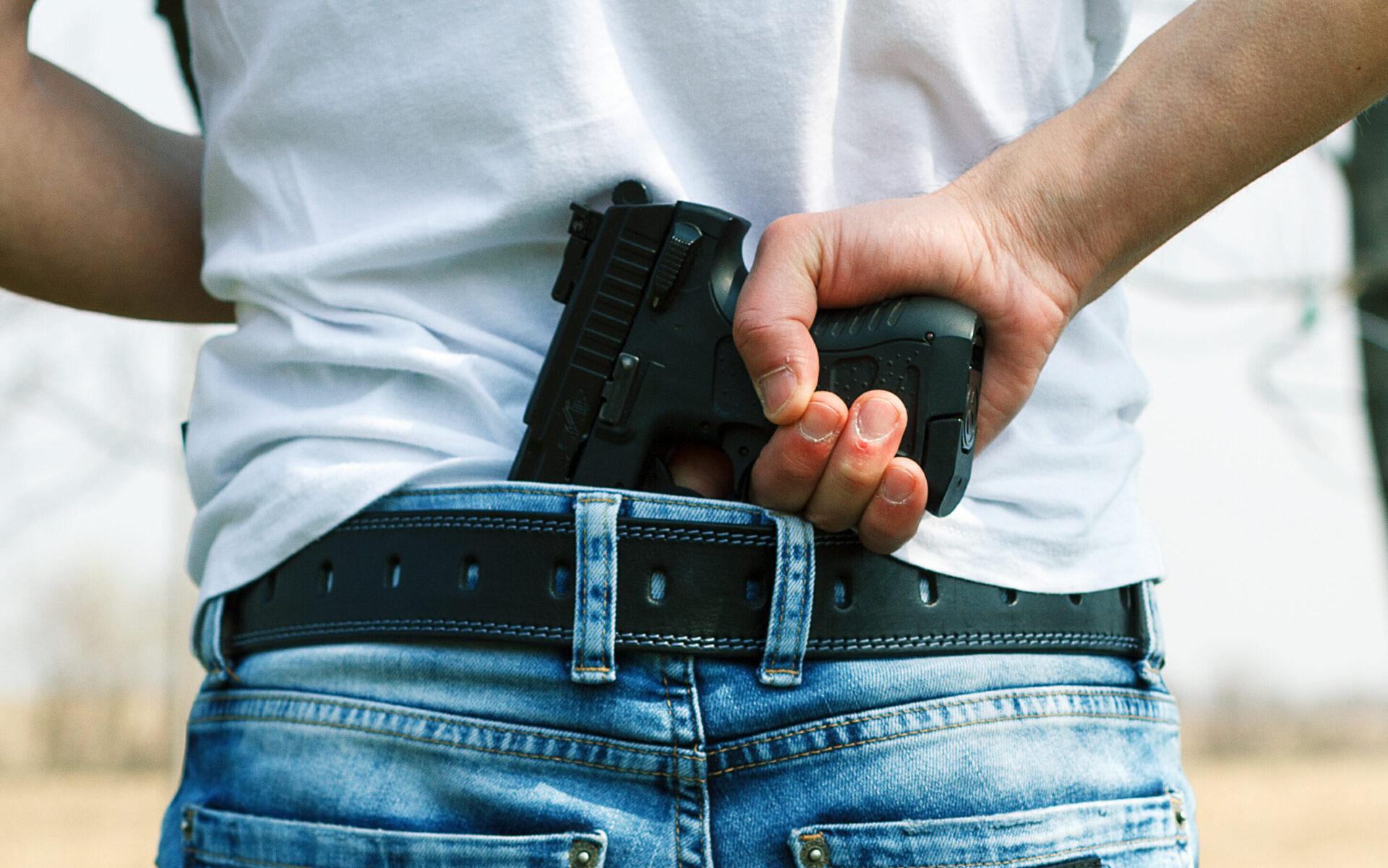
With the recent hysteria in the firearms industry, a lot of people are finding themselves buying their first guns. Most of these people have fired a gun before, but more than likely they always put actually buying one on the back burner. Some are completely new to the gun and ammo world and are feeling lost about what gun to buy, what ammo to buy, how much ammo do I need, and how much money should I spend? It’s completely understandable; a lot of gun rights supporters grew up in homes with guns, and therefore have always been around them, so these questions may fall on deaf ears. When taking an outside look in, guns and ammo can really be a confusing matter for a newbie.
Step One: The Importance of Comfort
The first and most often asked question is what is the best first gun to buy? Right now there are so many articles, blogs and YouTube videos out there that all have their opinion on what your first gun should be. The majority of these people giving the advice come to the consensus that the first weapon you should own is something you’re comfortable firing. This is a very good point, and I agree to an extent. If you’re not comfortable shooting the gun you purchased, then you won’t train with it.
I also disagree, and I’ll tell you why, but first humor me. The most comfortable weapon I’ve ever fired is a tie between a Kimber Ultra Carry 2 in .45 ACP and a Ruger 10/22. Kimber is known for their excellent 1911s, and this one is no different: beautiful, smooth trigger, manageable recoil, amazing ergonomics, and lightweight enough to carry concealed. The Ruger 10/22 is the king of .22s: a pretty much accepted fact. It’s the plinker’s gun of choice. No recoil, lightweight, reliable, and great ergonomics. The Kimber cost a grand though, and the Ruger 10/22 is a great weapon, but not the best for self-defense.
So I can’t afford the Kimber and I don’t want to risk my life with a Ruger 10/22—so what do I do? I get a weapon that’s a little uncomfortable for me and I deal with it. In my opinion, choosing a weapon is all about balancing comfort, firepower, and price. I don’t enjoy the trigger on striker-fired weapons, but I’ll go to war with a Glock any day that ends with “y.” Comfort is an issue, but it doesn’t mean you need to be coddled by your gun. It’s all about balance.
How to hide your guns, and other off grid caches…
Price sometimes becomes a big issue, especially these days. I tend to agree with the motto that you only have one life, so isn’t it worth the money? You’re right it is worth the money, but to be honest, it’s only a nice saying at the end of the day. Most people will live in the present, where no one is shooting at them but rent is due. So at this point it’s about arming yourself with what you can. A Hi Point is still better than knife, a Taser, or pepper spray.
So my answer to this is not to go into buying a weapon with the mentality of simply being comfortable with your gun, but balancing the need for comfort with the needs of firepower and price. So if all you can afford is a Mosin Nagant as your main battle rifle, then that’s your main battle rifle. Having a gun is step one and you can build from there. You don’t draw comfort from how the weapon physically treats you, but from how it mentally comforts you.
Step Two: Ammo
Ammo is basically gun batteries—a very simple analogy that I use for non-gun people. You’ve got to have ammo to make the gun go bang. So how much do you need? What kind do you need?
Ammo is something that can be used to help make your weapon more comfortable and controllable. If you own a .44 Magnum, you know the recoil makes it a tough weapon to use for self-defense, but you can load it with the much more controllable .44 special. If you feel your .38 special is a bit underpowered, then as long as your gun is rated for it, the 38+P round can give you a bit more juice for the squeeze. A little research into the ammo types can go a long way for a gun novice.
How much do you need is all based on your intentions. Is your weapon for concealed carry? If you are carrying the weapon daily then I suggest at least one reload, preferably two. For basic home defense I would also do the same. If you are a prepper, then can you ever really have enough? I buy my preps in phases: food, survival gear, ammo, etc. This has accumulated into quite the collection, but only through buying only a little at a time.
What kind do you need? For home and self-defense, I always suggest hollow point or frangible ammunition to prevent over penetration. If you have chosen a shotgun as your home defense weapon then I suggest nothing smaller than #4, and preferably you should use buckshot. Shorter barrel handguns should use lighter rounds to ensure the round will have enough velocity to open up the hollow point. Shorter barrels tend to produce less velocity, and lighter rounds fly at a higher velocity.
Preppers should follow the same idea for at least some of their ammo, especially for use in the home. However, buying Hornady tap rounds in bulk is for millionaires. For home defense buying a few boxes of hollow points for your pistols and revolvers is enough. One word of caution: some handguns do not feed hollow points well, so you should run a few mags of your chosen self-defense ammo through it to ensure it won’t fail in a time of need.
For your main battle rifle I stick with full metal jackets. If I’m using a battle rifle, I expect to be fighting at some kind of longer range, and over penetration will not be an issue. A prepper’s favorite, the Mosin Nagant, has incredibly cheap ammunition. The powerful 7.62 round can be purchased for $80 per 440 rounds. So for around $250 you can have a powerful rifle and a decent amount of full-powered ammunition. The round is powerful enough for self-defense and hunting.
Step Three: Accessories
The trend of “tactical” shooting has become quite main stream in the shooting world. I enjoy it; I love having a weapon similar to the one I carry in the Marine Corps. Forward grips, flashlight, lasers, high-speed optics: I love ‘em all. It’s a good time.
Keep Your Handgun Locked and Loaded, Ready For Instant Use – Without Fear Of An Accident!
Here is my issue with tactical shooting: people buy an AR and jump right on the tactical bandwagon. It’s the cool thing to do. These people forget the basics though—maybe the not the basics of shooting, but the basic accessories.
That Eotech is really cool and it’s a great optic, but what happens if the battery dies or the glass breaks? Do you have iron sights? Iron sights should be on every gun, even if it’s just a simple pair of flip-up sights. I love simplicity, and iron sites are as simple as it gets. Having them is a necessity for too many reasons to list—and not just having them, but also staying proficient with them.
It’s been said that slings are for lazy people: I hate that saying with every fiber in my body. Slings are for modern people who realize that in bad situations you may have to take your hands off the weapon to do things like treat the wounded, use a radio, read a map and compass, climb a ladder… and the list goes on and on. The idea that slings are for lazy people is ridiculous. A good sling should be one of the first accessories you buy. The three main different types of slings are single point, two point, and three point. Which one is chosen will be dictated by the shooter and what works for him or her. The weapon can dictate a sling choice as well, as a full-size M1A is not going to work well with a one point unless you’re about 8 foot tall.
A Mag Pull Angled forward grip is awesome, but that tiny rear pistol grip on your AK can’t be comfortable. I am guilty of this kind of decision: when I got my AK variant, the first thing I did was throw a forward pistol grip on it, completely ignoring the more important trigger hand grip.
This isn’t just about grips; it’s about throwing accessories on before you address main problems. You can throw a ton of sexy gear on your AR, but have you ever thought about a better charging handle like the Bravo Gun Fighter series? It’s hardly noticeable and not too sexy, but it actually improves a vital part of the weapon. Address the shortcomings of your weapons before spending the money to tacticalize them, and you’ll be well on your way to a good first weapon.










